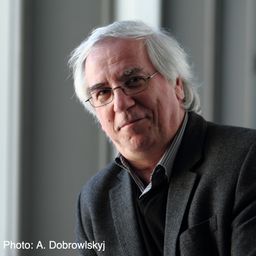
Rosalind Pepall
Rosalind Pepall recently retired as the Senior Curator of Decorative Arts, and formerly Curator of Canadian Art, at the Musée des beaux-arts de Montréal, where she was responsible for a wide range of exhibitions and publications including the book, Decorative Arts and Design: The Collection of the Montreal Museum of Fine Arts (MBAM 2012). For the National Gallery of Canada, she worked on the curatorial committee for the exhibition Artists, Architects & Artisans: Canadian Art 1890-1918, Charles C. Hill, ed. (National Gallery of Canada, 2013). Among other exhibitions she curated are : Ruhlmann: un génie de l’art déco (catalogue published by MBAM and Somogy, Paris, 2004, which was awarded Le Prix Houllevigue, Institut de France, Académie des Beaux-Arts). In the field of Canadian architecture, she co-curated a retrospective exhibition on the Montreal architectural firm of Edward & W.S. Maxwell (MBAM 1991). She was also responsible for the exhibition and catalogue on the Maxwell-design museum building, Construction d’un musée Beaux-Arts:Montréal 1912:Building a Beaux-Arts Museum, (MBAM, 1986). She continues to serve as a consultant and writer in the field of Canadian art, architecture and international design and recently published, Talking to A Portrait: Tales of an Art Curator (Montreal: Véhicule Press, 2020). She is presently studying the social history and patrimoine of the model industrial town of Arvida, Quebec, during its peak years of aluminum production in World War II.
Sessions in which Rosalind Pepall participates
terça-feira 30 agosto, 2022
Sessions in which Rosalind Pepall attends
segunda-feira 29 agosto, 2022
This session presents case studies and policy reviews that contribute to ongoing debate and international dialogue on the role of planning systems and conservation practices in addressing the challenges of citizen engagement—conserving local interests, place attachments alongside physical remnants of industrial heritage. Over the past half century, we have witnessed the development and changing focuses of urban planning and conservation discourses addressing industrial heritage. Relevant p...
Si la vallée du canal de Lachine a été le berceau de l’industrialisation canadienne, la géographie industrielle métropolitaine ne s’y est pas confinée, peu s’en faut, Outre les grandes concentrations d’entreprises des quartiers centraux, elle est constituée des réseaux infrastructuraux, d’une douzaine de centrales hydroélectriques et des ensembles manufacturiers disséminés dans une quinzaine de petites villes aujourd’hui intégrées dans l’aire métropolitaine. La conférence proposera un surv...
terça-feira 30 agosto, 2022
This session will allow us to explore, through nine international case studies, the different strategies for the development of industrial heritage as well as their impacts on communities and their territory. The analysis of museums, cultural spaces, itineraries and urban developments will be an opportunity to highlight the questions of identity, meaning, relevance and impact that animate all the actors of this heritage in transformation.
quarta-feira 31 agosto, 2022
Peu de travaux ont été consacré à l’histoire et à la présence de l’aluminium au sein des éléments patrimoniaux du bâti. Cette lacune constitue un obstacle à l’analyse et à la sauvegarde des patrimoines concernés, monuments historiques ou simples demeures comportant. Or, l’aluminium a offert de nouvelles possibilités aux architectes, grâce à ses caractéristiques mécaniques et chimiques très particulières. Présenté comme le métal de la modernité dans l’entre-deux-guerres, de la performance d...
quinta-feira 1 setembro, 2022
From its construction to its restoration, immerse yourself in the now and then of this key Canadian industrial heritage site. A country’s central maritime route, a major inland port, the Canadian Lowell (using hydraulic power), the cradle of industrialization, Smokey Valley (using steam), a manufacturing hotspot, the Lachine Canal is all of this and more. For it is also a national historic site, for which


